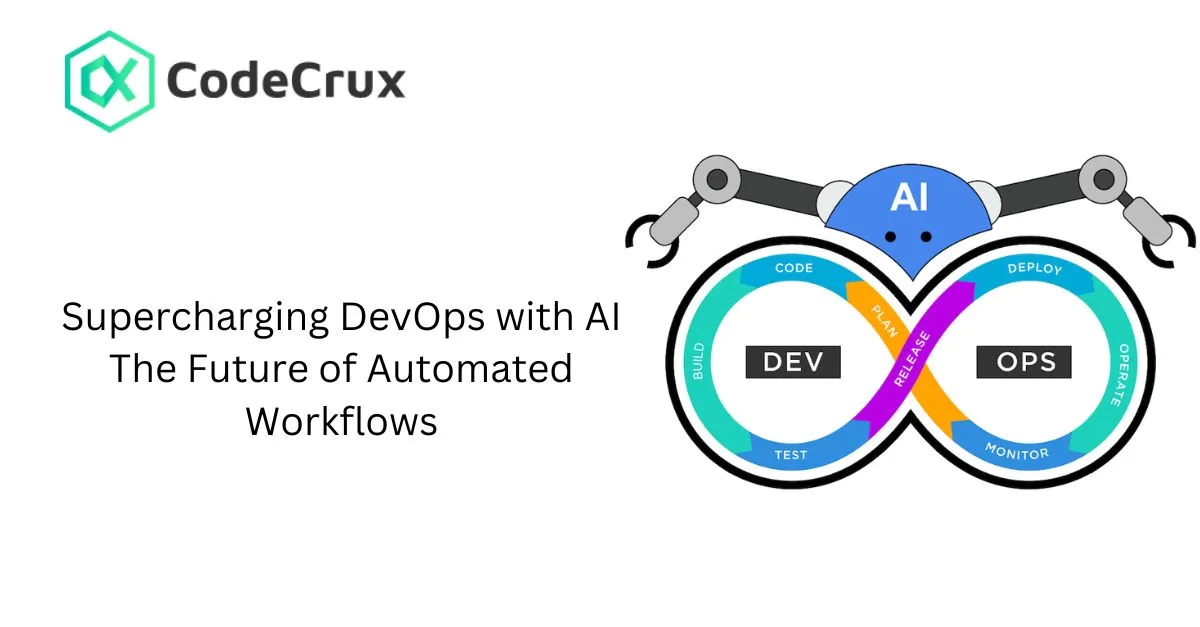Supercharging DevOps with AI The Future of Automated Workflows

In the fast-paced world of software development, organizations are constantly seeking ways to deliver high-quality software faster and more efficiently. Enter automation—a cornerstone of modern DevOps practices. By streamlining workflows, reducing human errors, and ensuring consistency, automation has become indispensable in accelerating software delivery. Best artificial intelligence company in Hyderabad Let’s dive deeper into how automation transforms the DevOps landscape.
1. The Need for Speed in Software Delivery
The competitive nature of today’s market demands rapid deployment cycles. Traditional manual processes are no longer sufficient to keep up with these demands. Automation addresses this gap by:
-
Reducing the time spent on repetitive tasks.
-
Enabling faster feedback loops through continuous integration and testing.
-
Ensuring seamless deployments with minimal downtime.
2. Key Areas Where Automation Shines in DevOps
Automation enhances DevOps processes across various stages of the software delivery pipeline. Here’s a closer look:
a. Continuous Integration/Continuous Deployment (CI/CD)
CI/CD pipelines are at the heart of DevOps, and automation ensures their smooth functioning. Automated build, test, and deployment processes allow teams to deliver updates faster while maintaining quality. Tools like Jenkins, GitHub Actions, and GitLab CI/CD are popular choices for enabling these capabilities.
b. Infrastructure as Code (IaC)
Provisioning infrastructure manually is time-consuming and prone to errors. Automation tools like Terraform, Ansible, and AWS CloudFormation enable teams to define and manage infrastructure programmatically, ensuring consistency and scalability. IaC also supports version control, making it easier to track and audit changes.
c. Testing Automation
Automated testing frameworks like Selenium, Cypress, and JUnit allow teams to detect and fix issues early in the development cycle. From unit tests to end-to-end tests, automation ensures comprehensive coverage with minimal manual intervention. Automated testing is essential for maintaining quality in agile and continuous delivery environments.
d. Monitoring and Incident Response
Automated monitoring tools like Prometheus, Grafana, and PagerDuty provide real-time insights into system performance and trigger alerts for anomalies, enabling quicker incident resolution. Additionally, automated remediation scripts can address common issues without human intervention, further reducing downtime.
3. Benefits of Automation in DevOps
Adopting automation in DevOps offers a host of benefits:
-
Improved Efficiency: Automation reduces the time and effort required for repetitive tasks.
-
Enhanced Consistency: Scripts and tools ensure that processes are repeatable and predictable.
-
Reduced Errors: By minimizing manual intervention, automation decreases the likelihood of human errors.
-
Scalability: Automated processes can handle increased workloads without additional human resources.
-
Faster Time-to-Market: Teams can iterate quickly and release updates more frequently, giving businesses a competitive edge.
4. Challenges in Implementing Automation
While the benefits are significant, implementing automation comes with its challenges:
-
Initial Investment: Setting up automation tools and pipelines requires time and resources.
-
Skill Gaps: Teams may need training to adopt new tools and processes.
-
Over-automation Risks: Automating poorly understood processes can lead to inefficiencies and bottlenecks.
-
Integration Complexity: Ensuring compatibility between multiple tools and systems can be challenging.
5. Best Practices for Effective Automation
To maximize the impact of automation in DevOps, consider these best practices:
-
Start Small: Automate high-impact, repetitive tasks first before expanding.
-
Leverage the Right Tools: Choose tools that align with your team’s needs and expertise.
-
Prioritize Continuous Improvement: Regularly review and optimize automated workflows.
-
Focus on Collaboration: Ensure development, operations, and QA teams collaborate to define automation goals.
-
Monitor Automation Performance: Continuously track the effectiveness of automated processes and address any issues promptly.
6. The Future of Automation in DevOps
As technology evolves, so does the potential of automation in DevOps. Artificial Intelligence (AI) and Machine Learning (ML) are already making strides in predictive analytics, automated decision-making, and intelligent monitoring. The integration of these technologies will further revolutionize software delivery, making processes smarter and more adaptive. For example:
-
AI-driven tools can identify patterns in failures and proactively suggest fixes.
-
ML models can optimize CI/CD pipelines by analyzing historical data to predict build times and resource needs.
-
ChatOps integrations with AI bots can enhance collaboration and automate routine tasks during incident response.
Conclusion
Automation is more than a tool; it’s a catalyst for transformation in DevOps. By embracing automation, organizations can accelerate software delivery, improve quality, and stay ahead in the competitive tech landscape. The journey to automation may require effort and investment, but the rewards in terms of efficiency, reliability, and speed are well worth it.